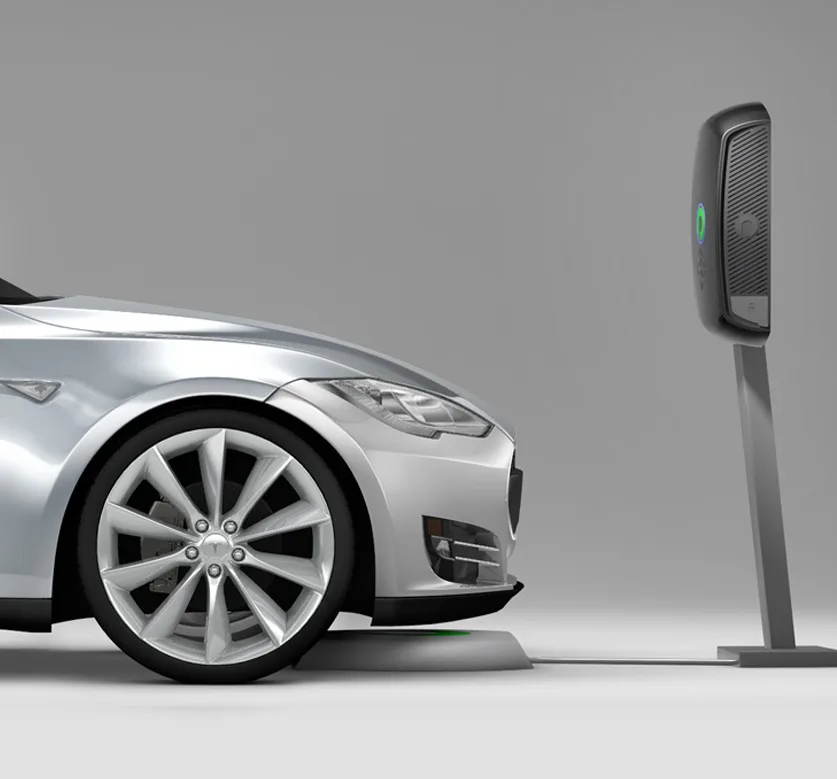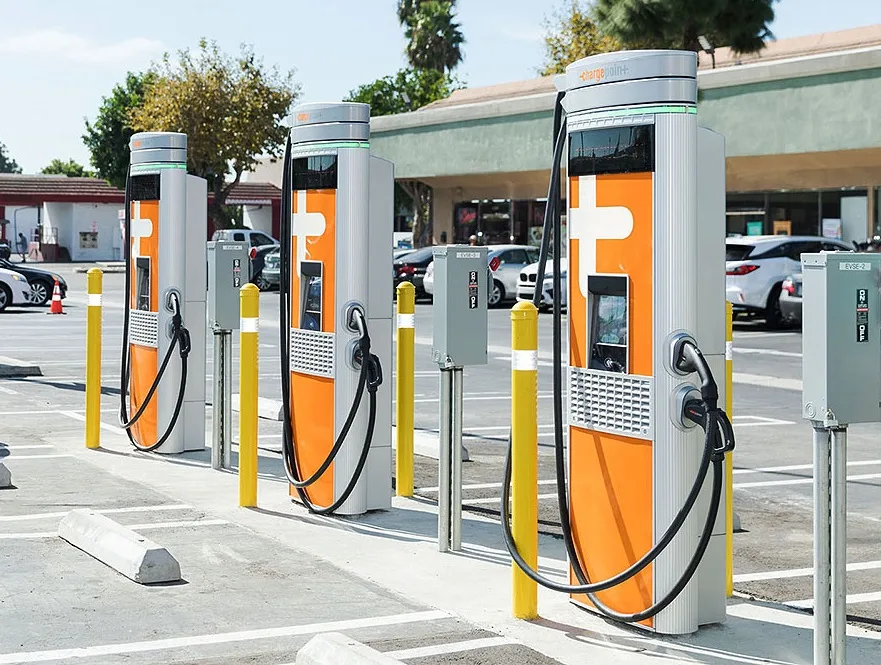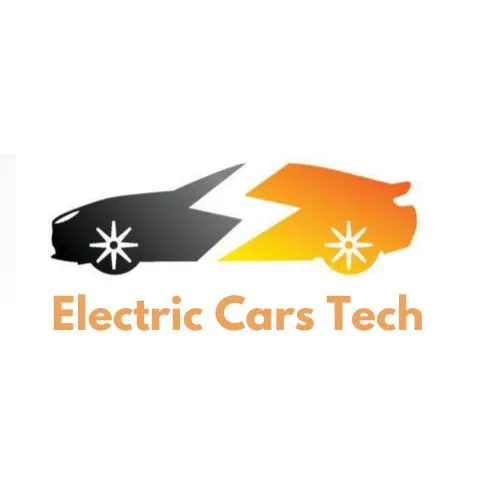EV Charging is one of the key concerns for many people considering making the switch from a gasoline-powered car. However, with electric vehicles, refueling—the recharging process—isn’t quite as simple, or as quick. There’s a number of reasons why that’s so, such as the fact that every electric vehicle can accept different amounts of power. There are also different types of connectors used, but most importantly, there are different levels of EV charging that determine how long it takes to charge an EV. Fortunately, there are several charging options available, and many of them are very convenient and affordable.
List Of EV Charging Options
Level 1: Charging: 110-120-Volt

The most fundamental and straightforward method of charging for electric vehicles is level 1 charging, sometimes referred to as sluggish charging. It works with a regular household outlet and normally charges at a rate of 1-3 miles of range per hour. Here is a more thorough explanation of Level 1 charging:
Equipment: A 120-volt AC charging cable that plugs into a regular household outlet is normally needed for level 1 charging. Although many electric vehicles come with a Level 1 charging cable, some may need to be purchased separately.
Connectors Used: Various charging connectors can be utilized for Level 1 charging, notably the NEMA 5-15 standard household plug, J1772, and Tesla
Time: Level 1 charging is the slowest charging option, and depending on the battery size and charging rate, it might take anywhere from 8 to 20 hours to fully charge an electric vehicle.
Cost: Level 1 charging costs the least because it uses a regular household outlet and doesn’t call for any special tools or installation fees.
Convenience: Level 1 charging is an easy way to top off the battery in your car while you sleep or are out and about during the day. Additionally, because it offers a moderate, consistent charge rate appropriate for overnight charging, it is a wonderful alternative for folks who do not usually drive their electric vehicle.
Limitations: The poor charging pace of Level 1 charging is its biggest drawback. It might not be appropriate for people who frequently or quickly need to fully charge their electric car, especially if they have a lengthy daily commute or need to travel great distances.
Despite its drawbacks, Level 1 charging is a viable alternative for many owners of electric vehicles, particularly those who only periodically need to top off the battery and only use their vehicle for short distances. It’s a fantastic place to start for individuals who are unfamiliar with electric vehicles and want to try it out before committing to a more sophisticated charging method.
Level 2: Charging: 208-240 volt

Level 2 charging, commonly referred to as intermediate charge, is a more sophisticated method of recharging electric vehicles. It delivers a quicker charging rate than Level 1 charging and makes use of a dedicated 240-volt charging station. Here is a more thorough explanation of Level 2 charging:
Equipment: A dedicated 240-volt charging station and a charging cable that is appropriate for your electric vehicle are needed for level 2 charging. You can install the charging station at your home or at a public charging station. Some electric vehicles come with a Level 2 charging cable, while others might need to be purchased separately.
Connectors Used: The most common connector for Level 2 charging in North America is the J1772 connector, while in Europe the AC Type 2 connector is more common.
Time: Level 2 charging may normally deliver a full charge in 4-6 hours, depending on the battery size and charging rate. It is also faster than Level 1 charging.
Cost: Because Level 2 charging requires a dedicated charging station and a charging cable, it is more expensive than Level 1 charging. It’s crucial to conduct research and weigh your options before choosing because installation and equipment costs can vary greatly.
Convenience: For people who need to charge their electric car more regularly or for longer periods of time, level 2 charging is a practical solution. The abundance of Level 2 charging stations at public charging locations makes it a great choice for individuals who travel by car.
Limitations: The biggest hurdle for some owners of electric vehicles is the cost of the installation and equipment for Level 2 charging. Additionally, if you intend to do lengthy road trips, you should think about if there are any Level 2 charging stations nearby.
Since Level 2 charging is quicker than Level 1 charging and strikes a balance between convenience and expense, it is a preferred option for many electric car owners. Whether it’s the best choice for you will depend on your driving preferences, financial situation, and charging requirements, so it’s crucial to carefully weigh your options before choosing.
Level 3: Charging: 400-Volt to 900-Volt (DC fast Charging)

The quickest and most sophisticated method of charging an electric vehicle is level 3 charging, sometimes referred to as fast charging. It can offer a full charge in as little as 30 minutes using a DC rapid charging station. Here is a detailed explanation of Level 3 charging:
Equipment: A DC fast charging station and an appropriate charging cable are needed for Level 3 charging. While some electric vehicles come with a Level 3 charging cable, some might need to be purchased separately. You have the option of having the charging station installed at home or at a public charging station.
Connectors Used : Several different types of connectors, such as CCS (Combined Charging System), CHAdeMO, and Tesla Supercharger, are utilised for Level 3 charging. The type of connector used will vary depending on the charging station and the make and model of the electric vehicle.
Time: Level 3 charging is the fastest charging method and, depending on the battery size and charging rate, can deliver a full charge in as little as 30 minutes.
Cost: Because Level 3 charging requires a dedicated charging station and a matching charging connection, it can be pricey. It’s crucial to conduct research and weigh your options before choosing because installation and equipment costs can vary greatly.
Convenience: Level 3 charging is a practical choice for anyone who need to swiftly charge their electric car, such as during lengthy road trips. Public charging stations have a large number of Level 3 charging stations that offer a quick and simple way to top off your battery while you’re out and about.
Limitations: The biggest drawback of Level 3 charging is the high cost of the installation and equipment, which may be prohibitive for certain owners of electric vehicles. Additionally, if you intend to do lengthy road trips, you should think about if there are any Level 3 charging stations nearby. It’s crucial to check with your car maker to learn what charging choices are available to you because some electric cars might not be compatible with all Level 3 charging stations.
The quickest and most sophisticated method of charging an electric vehicle is level 3 charging, which is perfect for customers who frequently drive long distances or need to charge their vehicle quickly. Whether it’s the best choice for you will depend on your driving preferences, financial situation, and charging requirements, so it’s crucial to carefully weigh your options before choosing.
Wireless Charging

Electric vehicles (EVs) can be charged wirelessly, sometimes referred to as inductively, without the use of a physical charging cord. Here is a more thorough explanation of wireless charging:
Equipment: An electric vehicle (EV) must have a compatible receiver and a particular charging pad that is fixed in the ground or on a surface. The EV’s receiver receives an electromagnetic field generated by the charging pad and transforms it into electrical energy to charge the battery.
Time: Depending on the charging rate and battery capacity, wireless charging is often slower than Level 2 charging and can take several hours to fully recharge the battery.
Cost: The price of wireless charging devices can be high, and installation and equipment costs can vary greatly, so it’s crucial to do your homework and weigh your options before choosing one.
Convenience: For those who wish to avoid the trouble of plugging in a charging cable, wireless charging is a practical choice. The lack of a physical charging cord makes it perfect for individuals who want to create a charging station at home.
Limitations: The primary drawback of wireless charging is that it takes longer to charge than Level 2 and Level 3 charging. It’s also crucial to note that not all EVs are compatible with wireless charging, so you should check with your car maker to see if it’s a possibility for your model.
In the realm of EVs, wireless charging is a relatively new technology that is gaining popularity as it develops and becomes more widely available. Whether it’s the best choice for you will depend on your driving preferences, financial situation, and charging requirements, so it’s crucial to carefully weigh your options before choosing.
Read about: “The Future of Transportation: Why Electric Cars are the Way Forward?”
Public charging networks

Public charging networks refer to the network of charging stations that are publicly accessible and located at various locations such as shopping centers, parking lots, and highway rest stops. Here’s a more in-depth look at public charging networks:
Equipment: Public charging stations can vary in terms of charging speed and equipment, but typically offer Level 2 charging. Some public charging stations may also offer Level 3 fast charging for electric vehicles (EVs) that are capable of fast charging.
Cost: Using a public charging station might be expensive, but many networks have membership programmes that grant discounts and other benefits. Additionally, some public charging stations provide free charging for a set period of time or a set number of kilowatt hours.
Convenience: For EV owners who need to charge their cars while they are out and about, public charging networks provide a practical choice. Finding a charging station when you need one is simple because to the abundance of public charging stations that are situated at well-known locations.
Network coverage: Before making a choice, it’s crucial to look into the choices in your area because the availability of public charging networks differs depending on where you reside. While some networks may have limited coverage and may not always have a charging station available when you need one, others may have broad coverage and have charging stations at numerous locations.
Compatibility: Check your EV’s compatibility with the public charging network you’re interested in before committing, as not all EVs are compatible with all charging stations. It’s vital to check before you go because some public charging networks may only offer charging cables for particular types of EVs or may only have a limited supply of charging cables.
For EV owners who need to charge their vehicles while they are out and about, public charging networks offer an easy choice. Where you reside might affect the price and accessibility of public charging networks, so it’s crucial to do your homework and thoroughly weigh your options before making a choice.
Read About: BEST 10 STOCKS TO BUY IN 2023
Best 10 Money Making Apps For 2023
Best 10 DeFi Projects To Invest In 2023

ElectricCarsTech is a dedicated blogger with a passion for electric vehicles (EVs). Committed to bringing the latest trends, updates, and insights from the EV world, this blog serves as a hub for enthusiasts and curious minds alike. Stay charged with ElectricCarsTech and drive into the future of mobility with us.

